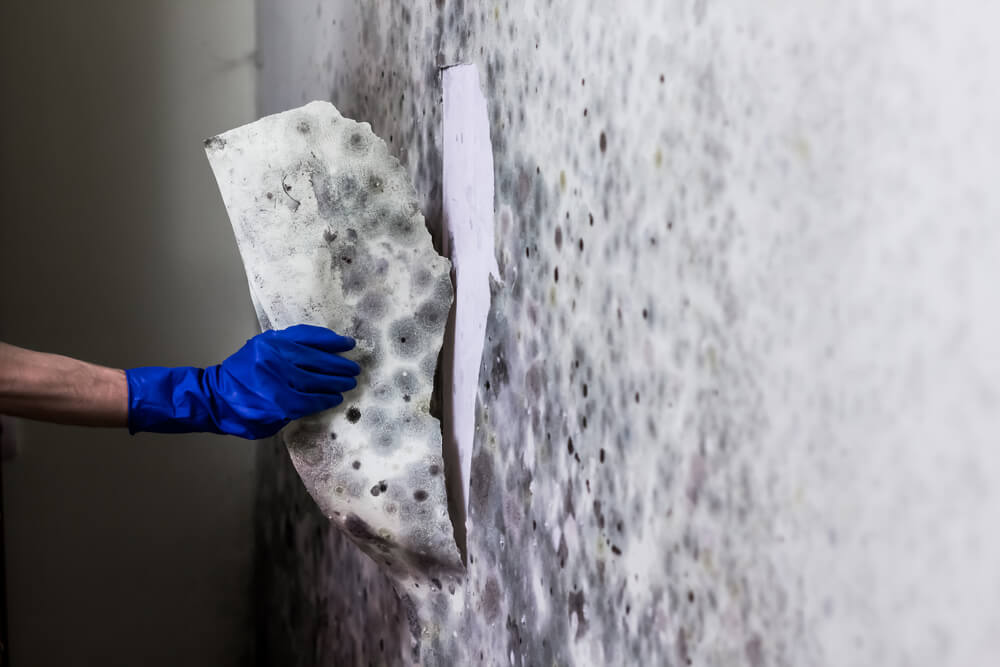Efficient Post Mold Remediation Cleaning Protocols
Efficient Post Mold Remediation Cleaning Protocols
Blog Article
Expert Tips for Blog Post Mold Removal Success
In the realm of mold removal, successfully eliminating mold is just half the fight; the real obstacle exists in avoiding its reappearance. By sticking to professional pointers and finest practices, individuals can guard their rooms versus mold and mildew rebirth and maintain a healthy and balanced interior atmosphere.
Screen Moisture Degrees Routinely
After finishing mold and mildew removal procedures, preserving ideal humidity levels is vital to protect against mold re-growth and guarantee a healthy and balanced interior setting. High moisture degrees over 60% create a conducive environment for mold and mildew to flourish, making routine keeping track of an aggressive measure to avoid any future mold issues.
Using hygrometers or wetness meters can help in precisely gauging humidity degrees in different locations of the residential property. These tools give real-time data that makes it possible for remediation experts to make enlightened decisions regarding ventilation, dehumidification, and other required actions to keep perfect humidity levels post-remediation. Additionally, establishing a regular schedule for humidity checks, especially in risky areas such as cellars, restrooms, and kitchen areas, is a positive approach to mold and mildew avoidance. By consistently monitoring humidity degrees, homeowner can efficiently reduce the danger of mold reoccurrence and maintain a healthy indoor atmosphere post-remediation.
Conduct Thorough Inspections Post-Remediation
Following the conclusion of mold removal treatments, it is crucial to carry out extensive examinations to verify the performance of the remediation process. These post-remediation evaluations are crucial in making certain that the mold problem has been successfully dealt with and that there is no reoccurrence or continuing to be mold growth. Inspections should be lugged out by certified specialists that have know-how in recognizing mold and mildew and analyzing indoor air quality.
During these examinations, numerous approaches such as aesthetic analyses, air sampling, and surface area sampling may be utilized to extensively evaluate the remediated areas. Visual assessments include a thorough evaluation of the facilities to look for any kind of noticeable indicators of mold development or water damages. Air tasting helps in determining the air-borne mold spore levels, while surface sampling can find mold and mildew bits on surfaces.
Implement Proper Air Flow Methods
After making certain the efficiency of the mold and mildew removal process through extensive examinations, the following critical step is to concentrate on implementing proper ventilation techniques. Appropriate air flow is essential in avoiding mold and mildew reoccurrence by regulating wetness degrees and advertising air blood circulation.
Appropriate air flow not only help in avoiding mold and mildew growth however likewise contributes to the overall wellness and comfort of passengers. By making sure sufficient ventilation throughout the building, you like it can minimize the danger of mold regrowth and produce a much healthier living environment.

Usage Mold-Resistant Materials for Repair Works
To boost the long-lasting efficiency of mold and mildew removal efforts, including mold-resistant materials for fixings is vital in reducing the risk of future mold and mildew growth. Mold-resistant products are designed to hold up against wetness and hinder mold and mildew development, making them a crucial option for areas vulnerable to moisture and humidity. When fixing locations affected by mold and mildew, using products such as mold-resistant drywall, mold-resistant paints, and mold-resistant caulking can aid prevent mold and mildew reoccurrence.
Mold-resistant drywall is an outstanding alternative to typical drywall in locations like washrooms and basements where dampness degrees are higher. This type of drywall has a special finishing that withstands mold and mildew development also when exposed to damp problems. In addition, using mold-resistant paints consisting of antimicrobial agents can better prevent mold and mildew development on wall surfaces and ceilings.
In areas where dampness is usual, such as kitchens and shower rooms, utilizing mold-resistant caulking around windows, sinks, and tubs can aid seal out water and her latest blog stop mold from holding in splits and holes. By purchasing these mold-resistant materials throughout repair services post-remediation, you can dramatically lower the likelihood of future mold and mildew problems and maintain a healthier interior atmosphere.
Maintain Sanitation and Address Water Issues
After mold removal, it is important to maintain a clean setting to prevent the regrowth of mold and mildew. Leakages, water intrusion, or high humidity levels can produce the excellent reproduction ground for mold, so it is imperative to fix any water-related issues quickly.
To maintain tidiness, think about utilizing HEPA filters in vacuums and air purifiers to trap mold and mildew spores and avoid their blood circulation airborne. Making certain proper ventilation in locations susceptible to moisture buildup, such as kitchens and bathrooms, can aid keep humidity degrees in check. By staying alert regarding cleanliness and addressing water issues promptly, you can efficiently protect against mold reinfestation and keep a healthy and balanced indoor atmosphere.
Final Thought

In the world of mold and mildew remediation, effectively getting rid of mold and mildew is just half the fight; the real obstacle lies in avoiding its reappearance. After completing mold and mildew remediation procedures, maintaining optimal moisture degrees is essential to prevent mold and mildew re-growth and make sites certain a healthy interior setting. High humidity degrees above 60% create a conducive environment for mold and mildew to grow, making regular checking an aggressive measure to avoid any kind of future mold and mildew problems.
To enhance the long-lasting performance of mold removal initiatives, including mold-resistant products for fixings is critical in alleviating the danger of future mold development. After mold removal, it is critical to preserve a clean atmosphere to protect against the regrowth of mold.
Report this page